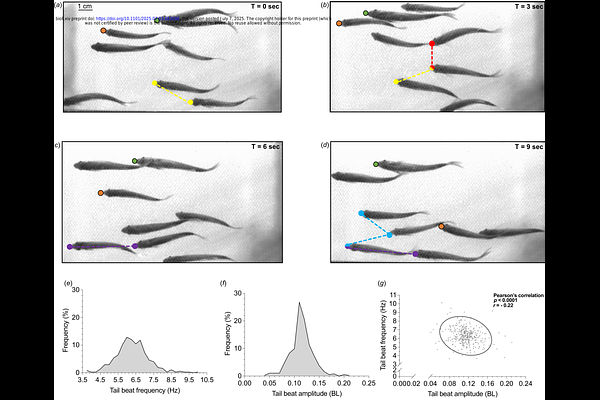Fish locomotor variation: connecting energetics and kinematic modulation

Fish locomotor variation: connecting energetics and kinematic modulation
Zhang, Y.; Ramesh, D.; Ko, H.; Lauder, G. V.
AbstractAnalyses of vertebrate locomotion have frequently revealed variations in locomotor energetics and movement both among individuals and through time within an individual. This variation is often collapsed into mean values for broad comparative analyses of function. However, kinematic patterns of locomotion, even when animals move at a near-constant mean speed, frequently vary with both the physical and biological context. Here we demonstrate, using analyses of fish locomotion and energetics, how variation among individuals in kinematic gaits can manifest as changes in dynamics of metabolic rate (estimated from oxygen uptake). We present kinematic data from a small school of giant danio (Devario aequipinnatus) to show that fish within a school frequently modulate their kinematics and change position, even when the school moves at an overall constant mean speed. We show that rainbow trout (Oncorhynchus mykiss), swimming over a range of speeds, exhibit considerable variation in tail beat frequency and metabolic rate among speeds. By experimentally altering the fluid dynamic environment, we demonstrate that brook trout (Salvelinus fontinalis) show correlated modulation of both kinematics and metabolic rate. Simultaneous measurement of energetic and biomechanical characteristics can unveil the physiological, biomechanical, and fluid dynamic mechanisms that underlie dynamic changes in vertebrate locomotor gaits.